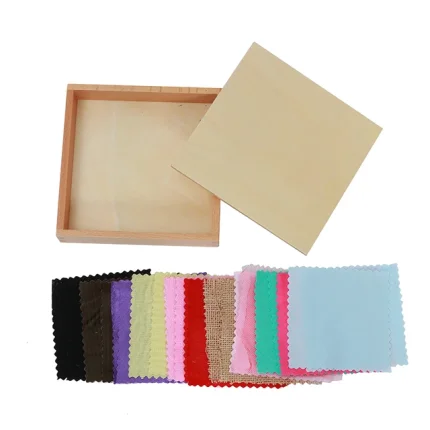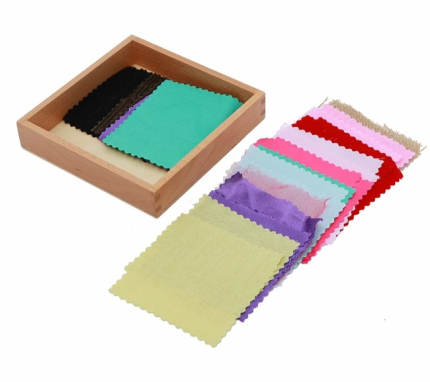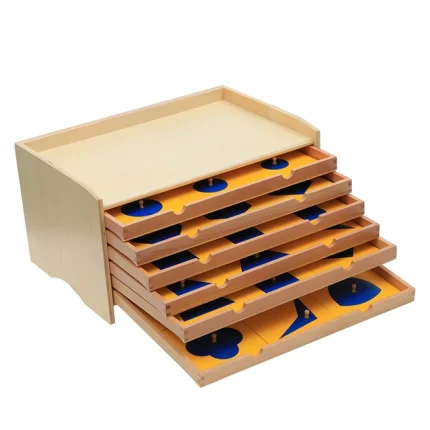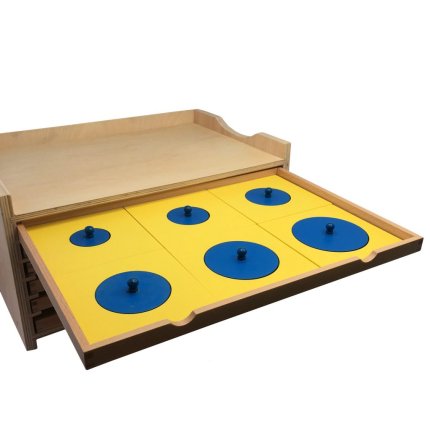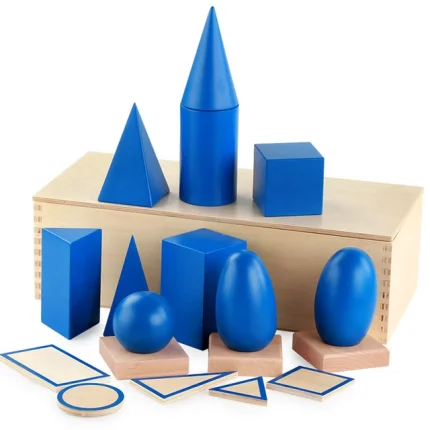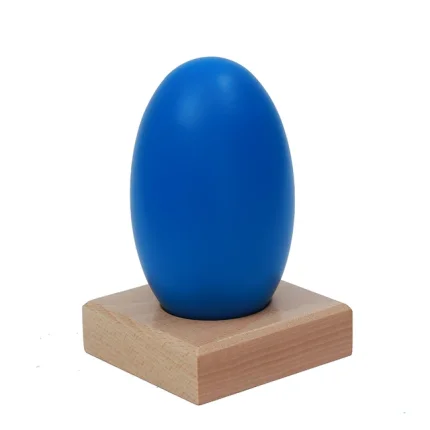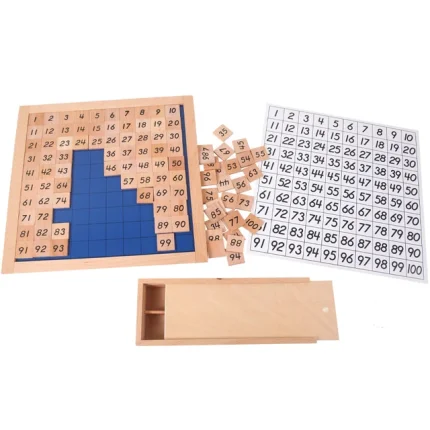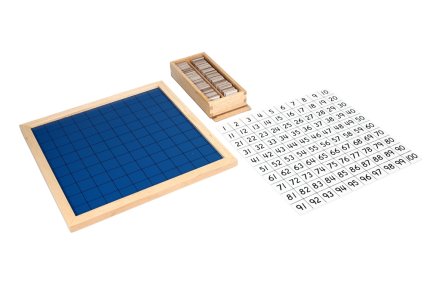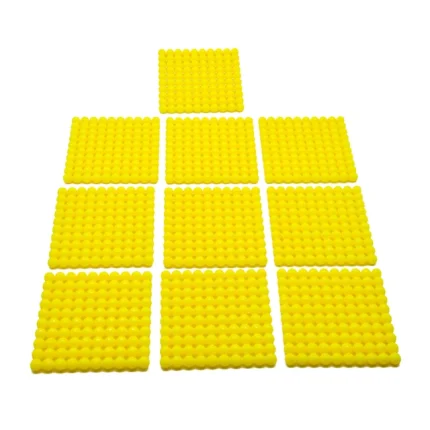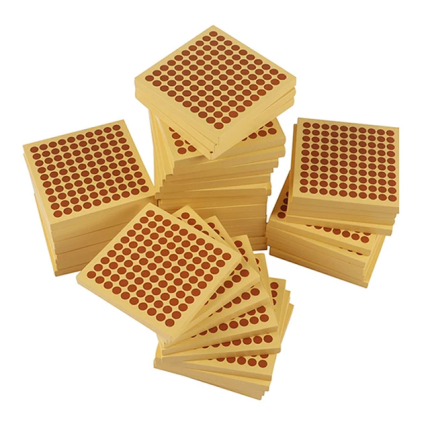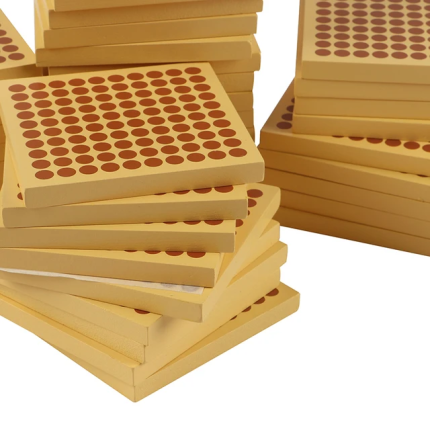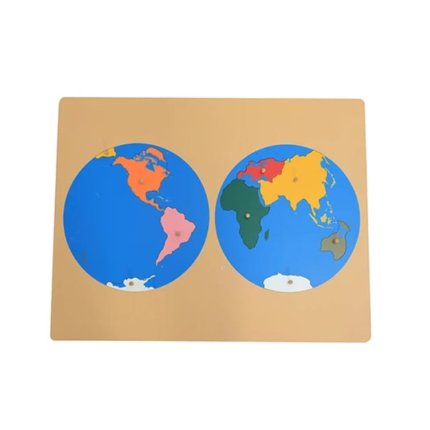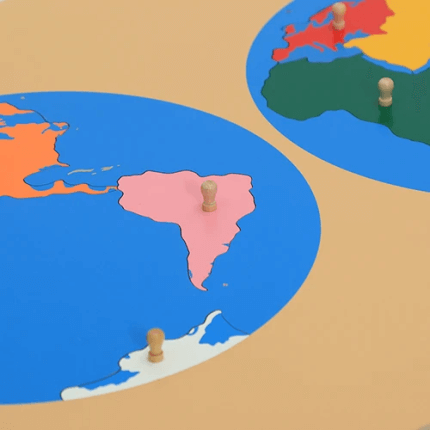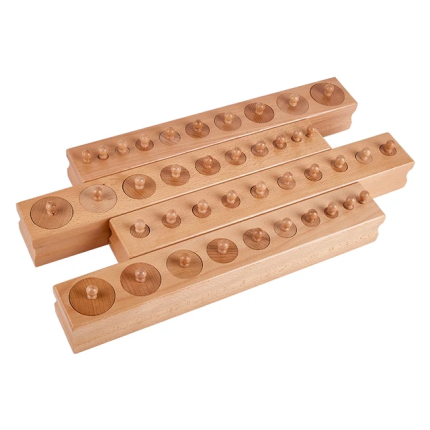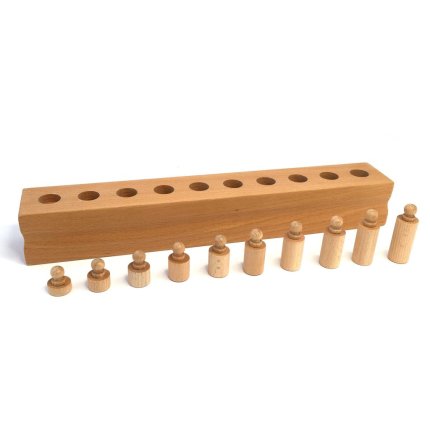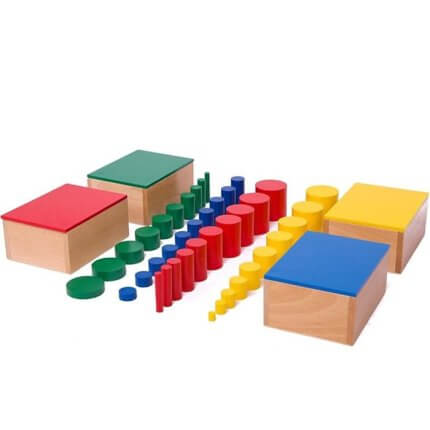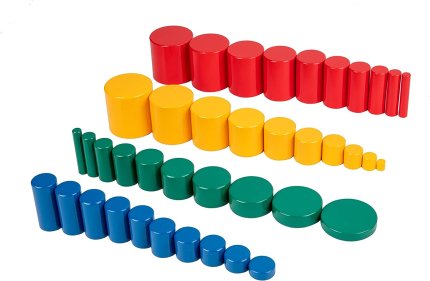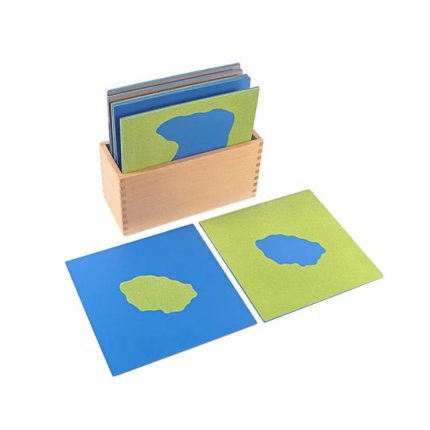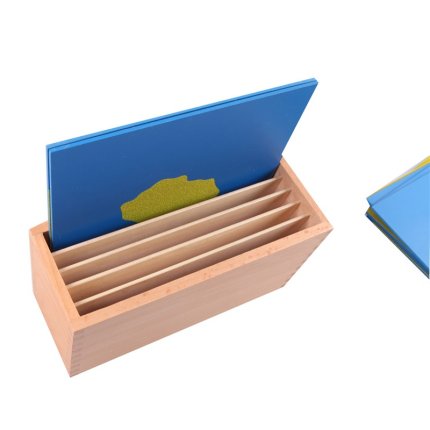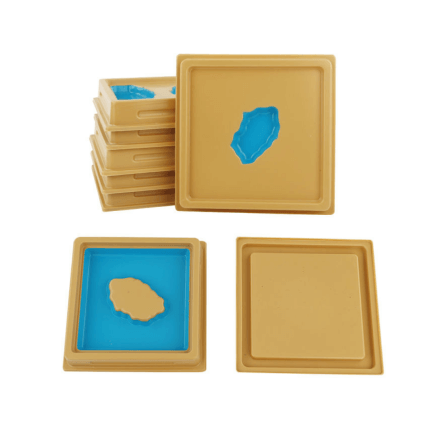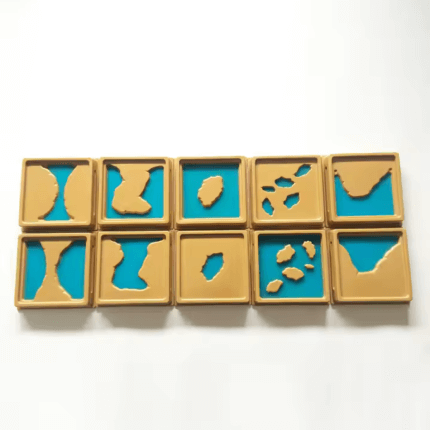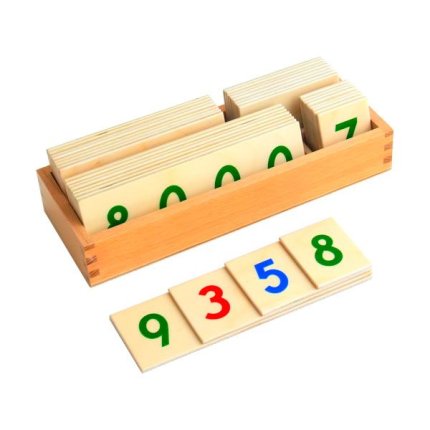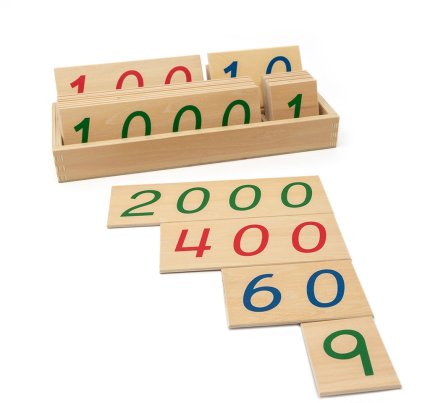Fabrics Box
The Montessori Fabrics Box is a sensorial educational tool designed to refine a child's tactile senses by exploring different textures. Typically, it contains pairs of fabric squares, each offering a unique texture for the child to feel and identify, often with their eyes closed to enhance the tactile experience. This activity not only aids in developing a child's sense of touch but also supports language development as they learn to describe and differentiate between textures such as smooth, rough, soft, or coarse. The Montessori Fabrics Box is a simple yet effective way to engage young learners in sensory exploration and cognitive development.
Age 3:6
Geometric cabinet
The Montessori Geometric Cabinet is a classic educational tool designed to help children develop visual discrimination of shapes. It consists of a wooden cabinet with drawers containing various geometric shapes with knobs, which children can handle and explore. This hands-on approach not only introduces children to basic geometry but also aids in refining motor skills and preparing them for writing. The cabinet is often used in Montessori classrooms to enhance learning through sensory experience and is suitable for children in the primary age range.
Age 3:6
Geometric solids
The purpose of these 3-D shapes is to demonstrate how 3-dimensional shapes are
Related to 2-dimensional shapes. This is great preparation for future geometry and
trigonometry work, They serve as a sensorial material that helps children develop their stereognostic sense and prepare for more advanced geometry work. Through hands-on exploration, children can discover how three-dimensional shapes relate to two-dimensional ones, laying a foundation for understanding spatial relationships and mathematical concepts.
Age: +4
Hundred board
Hundred board
The Hundred Board is useful for number recognition, number sequencing, counting,
Patterning, possibly skip counting helps children make the leap from the recognition of
Numbers, to understanding how they belong in a sequence. As the name suggests,
It focuses specifically on numbers 1 – 100.
Age 4 : 6
Hundred golden squares
Hundred wooden squares
Jigsaw world map
Jigsaw world map
Children begin to build their knowledge of the world’s geography. puzzle map is part of
The Montessori geography material and shows both hemispheres and the colors of the
Continents correspond with those of the globe of the continents, allowing comparison of
The round shape of the globe and the flat depiction of the earth on the puzzle.
Age 4+
Knobbed cylinders
The Montessori knobbed cylinders are a classic sensorial activity designed to assist children in developing their fine motor skills, visual discrimination, and spatial awareness. These sets typically consist of wooden blocks with variously sized holes to fit the corresponding cylinders, which are equipped with knobs for easy handling. As children engage with these materials, they learn to recognize and differentiate sizes and dimensions, laying a foundational understanding of mathematical concepts. The knobbed cylinders are not only educational but also provide a hands-on experience that encourages concentration and independent learning.
Age 3:6
Knobless cylinders
There are 4 boxes of cylinders are exactly the same dimensions as the knobbed cylinder blocks.
The Montessori Knobless Cylinders are a set of colorful educational tools designed to enhance a child's ability to discern differences in dimension, such as height and diameter. Comprising four sets of ten cylinders, each varying in one or two dimensions, these materials are integral to the Montessori method of teaching. They not only aid in developing a child's visual discrimination skills but also serve as a hands-on approach to learning about spatial relationships, size, and proportion.
Age 3:6
Land & water sandpaper
Land and Water trays
Molded dimensional trays representing actual land and water forms. These trays are to be filled with water that is colored blue.
Our planet is divided into areas of water and areas of land, and children enjoy learning
about the various forms land and water can take. You can explore land and water forms
at home in various ways.
10 trays containing the following land and water forms: lake - island, gulf - peninsula, strait - isthmus, system of lakes - archipelago, bay - cape.
Age: 4+

